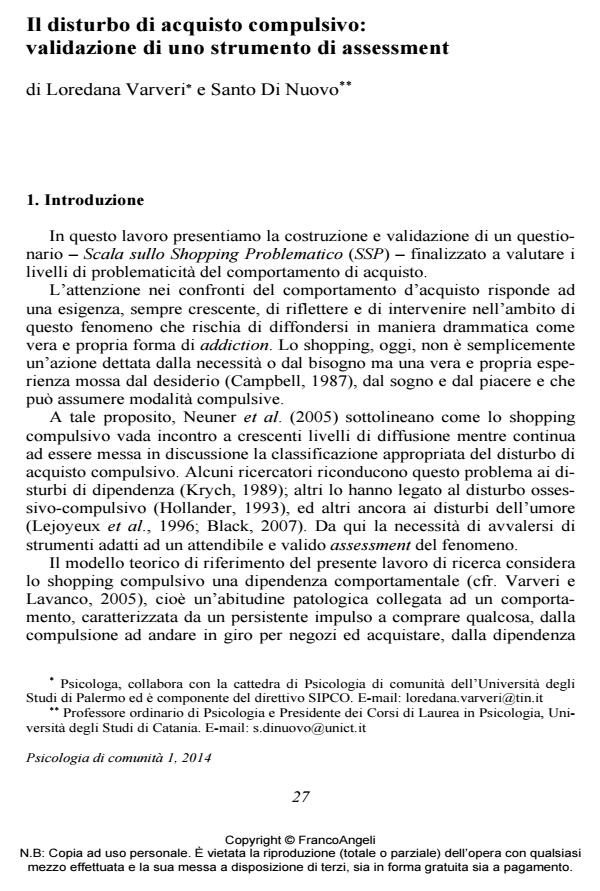Il disturbo di acquisto compulsivo: validazione di uno strumento di assessment
Titolo Rivista PSICOLOGIA DI COMUNITA’
Autori/Curatori Loredana Varveri, Santo Di Nuovo
Anno di pubblicazione 2014 Fascicolo 2014/1
Lingua Italiano Numero pagine 19 P. 27-45 Dimensione file 110 KB
DOI 10.3280/PSC2014-001003
Il DOI è il codice a barre della proprietà intellettuale: per saperne di più
clicca qui
Qui sotto puoi vedere in anteprima la prima pagina di questo articolo.
Se questo articolo ti interessa, lo puoi acquistare (e scaricare in formato pdf) seguendo le facili indicazioni per acquistare il download credit. Acquista Download Credits per scaricare questo Articolo in formato PDF

FrancoAngeli è membro della Publishers International Linking Association, Inc (PILA)associazione indipendente e non profit per facilitare (attraverso i servizi tecnologici implementati da CrossRef.org) l’accesso degli studiosi ai contenuti digitali nelle pubblicazioni professionali e scientifiche
L’articolo presenta la costruzione e i risultati della validazione di un questionario, la Scala di Shopping Problematico (SSP), ideato per la valutazione del comportamento d’acquisto irregolare. La scala, composta nella versione finale da 22 item, ha dimostrato buona consistenza interna. L’analisi fattoriale consente di individuare due dimensioni principali che spiegano il 44.84% della varianza totale. Lo studio dell’affidabilità e della validità concorrente hanno evidenziato risultati pienamente soddisfacenti per cui la SSP può essere considerata, dal punto di vista psicometrico, uno strumento valido per la valutazione del comportamento d’acquisto irregolare. È, inoltre, di facile somministrazione e non richiede un training specifico; si configura perciò utile per ricerche epidemiologiche e all’interno di una procedura di screening alla quale far seguire una fase di approfondimento.
Parole chiave:Shopping compulsivo, dipendenza, valutazione, attendibilità, validazione, Scala di Shopping Problematico.
Loredana Varveri, Santo Di Nuovo, Il disturbo di acquisto compulsivo: validazione di uno strumento di assessment in "PSICOLOGIA DI COMUNITA’" 1/2014, pp 27-45, DOI: 10.3280/PSC2014-001003